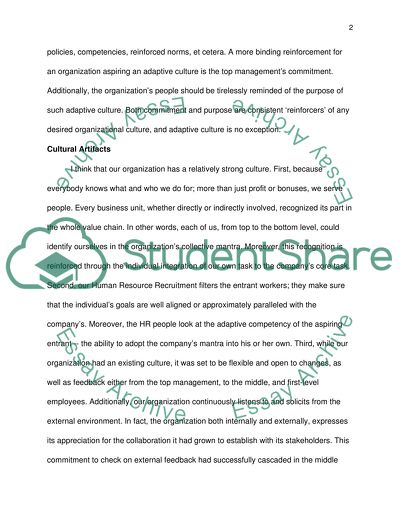Adaptive Culture and Cultural Artifacts Essay Example | Topics and Well Written Essays - 500 words. Retrieved from https://studentshare.org/miscellaneous/1590765-adaptive-culture-and-cultural-artifacts
Adaptive Culture and Cultural Artifacts Essay Example | Topics and Well Written Essays - 500 Words. https://studentshare.org/miscellaneous/1590765-adaptive-culture-and-cultural-artifacts.


